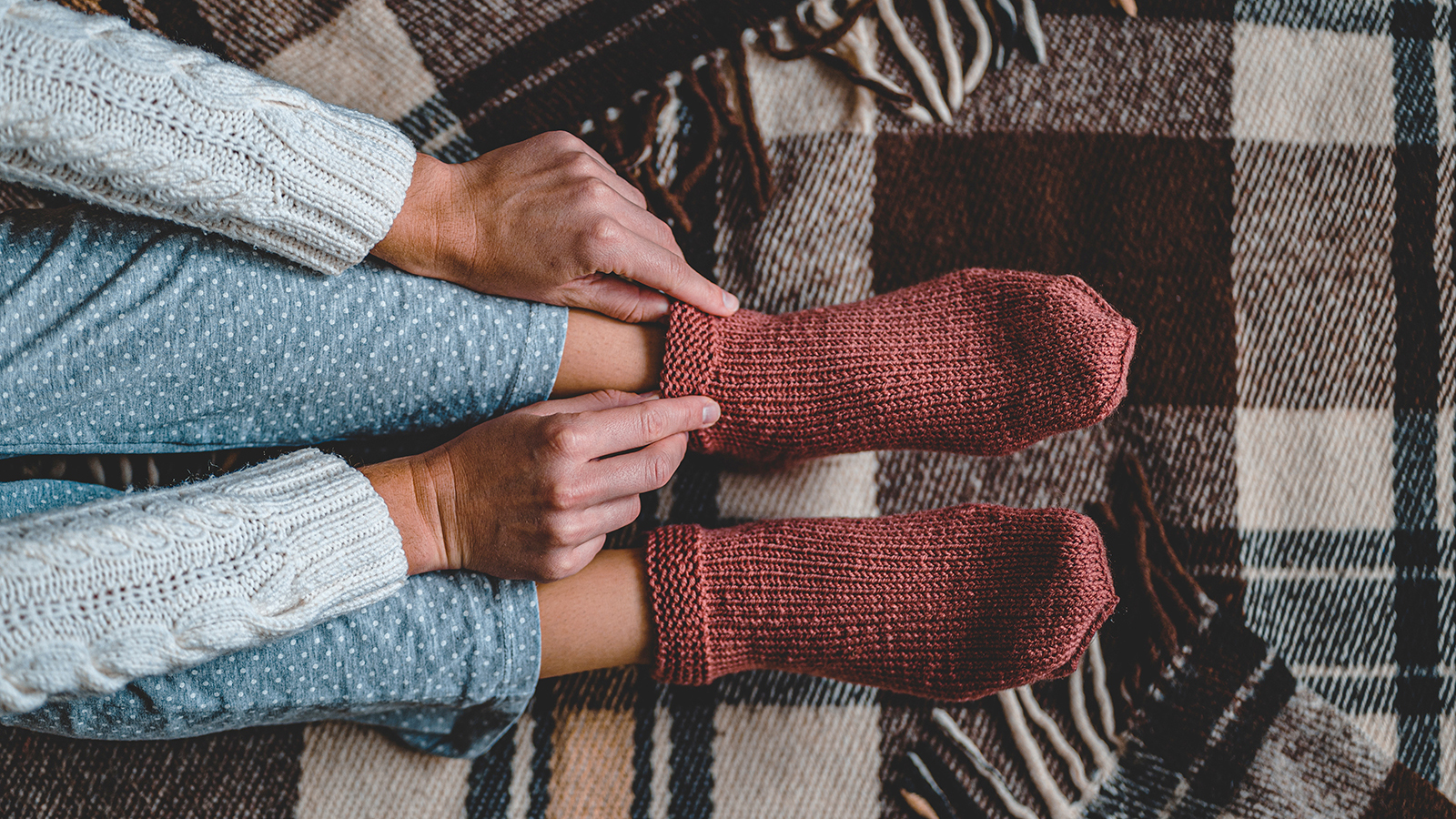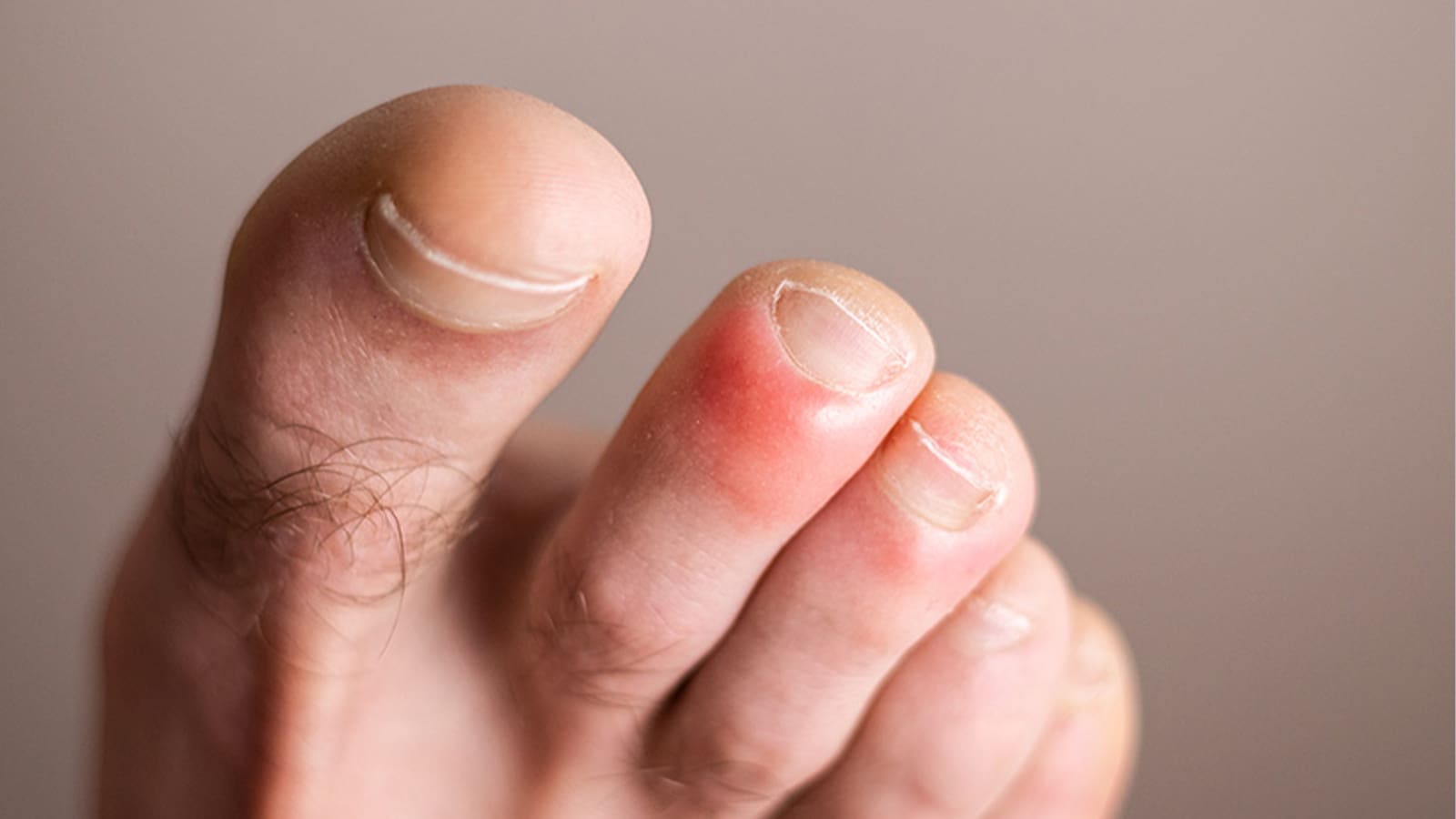Join The Nantwich Clinic Club to keep up to date with news and offers!
Sign Up
Once again, we’re in the part of the year where the cold weather takes it’s toll on everything around us, from freezing your windscreen over to making your feet feel like they’re frozen solid. Wanting to keep yourself warm is all that you want to do when cold weather strikes, with a big fluffy blanket or hot water bottle being your best friend in that situation, but did you know that the extreme temperature change can cause even more problems for your feet? We’re talking about something called chilblains, which are a series of itchy and painful lumps on the toes.
Chilblains are small, red, and itchy swellings on the skin, which occur as an abnormal response to cold temperatures that can be particularly painful. In addition to the toes, they can also affect other extremities, such as the fingers, ears and nose. However, other areas of skin can develop chilblains as well, such as the heels, lower legs or thighs.
They form as an adverse reaction to fairly harsh cold weather when the blood vessels in the feet shrink to keep the body warmth closer to the body instead of the skin (which is where heat is lost) and when they are rewarmed too quickly it can cause blood and fluid to leak, causing the red and swollen appearance.

Although chilblains are common, the condition mainly affects young adults working outdoors in cold places or people who do not wear socks or tights in winter. Elderly people whose circulation is less efficient are also susceptible. There are also a number of other things that can increase the risk of getting chilblains, including;

Diabetes and chilblains
Occasionally chilblains can cause the skin to break down to leave a small ulcer, which is prone to infection. Therefore, it is vital to look after your feet, examine them carefully every day, especially if you are diabetic and have loss of sensation in your feet. If the chilblain has ulcerated, apply an antiseptic dressing. If you have diabetes or are undergoing medical treatment, it is important that you have the ulcer assessed by your GP or podiatrist.
While it’s not an absolute certainty that these tips will help you to completely stop getting chilblains, they will help to prevent the risk of chilblains from occurring and can ease any symptoms. Things such as keeping your feet warm and dry at all times will definitely help, and ensuring that you don’t go from cold to hot too quickly will be vital. If your body, especially your feet, is feeling cold it is very important to warm them up slowly.
Another good tip is to avoid jumping straight into a hot shower or bath when you come in from the cold, or getting your feet in front of a heater. Instead, you could try putting on a pair of slippers or thick socks to let your feet warm up slowly and naturally. It’s also a good idea to avoid walking around with bare feet as this will stop your feet from warming up properly.

If you already have chilblains, there are some “at home” treatments that you can perform to help ease the symptoms and pain associated with them.
Before trying these “at home” remedies though, it’s incredibly important to ensure that you are suffering from chilblains. If you’re not sure, the best thing that you can do is speak to a member of our podiatry team.
To find out more about chilblains and what we can do to treat them, or to book an appointment with our podiatry team, contacting us directly is the best step that you can take. Please click here to book an appointment with our team, or call us on 01270 627118 to discuss your options.
Whether it’s a quick question that you need to ask, or you would like to book an appointment with us, we want to hear from you. Simply click the button below to get started or contact us on 01270 627118.
